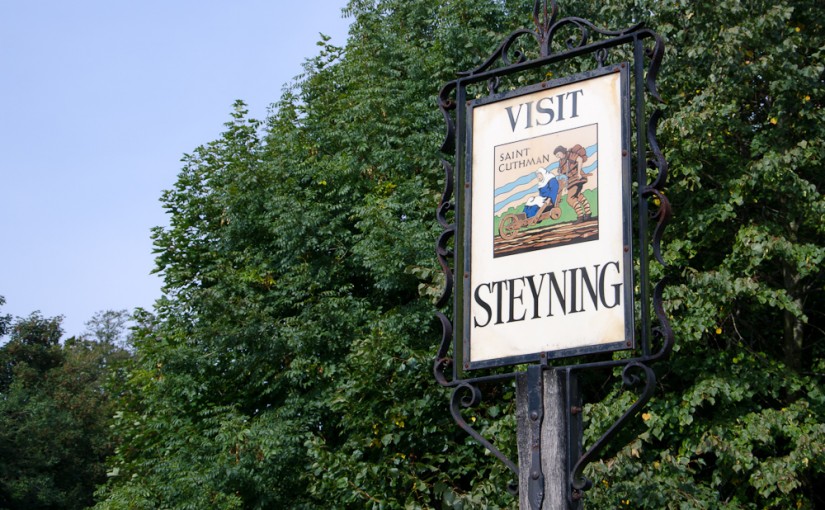In the 1990s, my grandfather conducted some genealogical research and determined the following:
In or around 1853, a man with my surname set sail for the recently-founded colony of New South Wales. He apparently did so voluntarily (though I have ample evidence to support the theory that others of my ancestors were compelled in that direction). On arrival, he (again, apparently voluntarily) sired thirteen children, some nine or ten of whom survived to themselves reproduce. Thus were spawned pretty much all the Stennings you see around you in Australia today.
The place from which he set out was a town in Sussex called Steyning. Naturally enough, since we were planning to be in the South of England, I thought I’d take a look at where it all began.
I don’t know what I was expecting exactly. If I’m honest with myself, I suspect I was oscillating somewhere between a working-class village full of whatever the English equivalent of bogan is, whose literary pretensions extended no further than the local tabloids and whose wives were downtrodden and greasy-haired; and an English version of my friend Angie’s extended Greek family, with a welcoming Yia-Yia lamenting her inability to adequately fatten me up, and a swarm of barely-known cousins waiting to include me in some traditional dancing, the ability to perform which would be mysteriously inborn.
Obviously neither of these was remotely near the mark. While the pub where we stayed was, in fact, frequented by locals who all knew each other, they seemed a friendly bunch and they animatedly discussed where they were up to in their collections of Breaking Bad DVDs. The local houses were ludicrously picturesque, like the idea someone might have of an English village having only experienced them through illustrated fairy-tale books and cheap Jane Austen adaptations. As in any small town, the local youth appeared basically disaffected, and I sensed it was a short step to setting things on fire just for something to do. On the other hand, there was a local grocer on the high street selling organic veges and locally produced cheese and beer, and the meat hanging in the butchers shop window looked so lovely I almost cried. (I later dragged Sim back to ogle the chickens, beautiful fat juicy-looking things which made me long for an oven and a bag of potatoes.) The gardens had apple and cherry trees dripping with fruit; we went past a house which had a bucket of apples out the front with a sign inviting us to help ourselves.
So, predictably, life turned out to be both more and less than I expected. It was a weird feeling to find people with my name buried in the churchyard; we don’t usually come across one another, and even though we weren’t all alive it still felt significant.
Of course, eventually we had to leave. Our next stop was Pevensey Castle, which stands on the spot where William the Conqueror landed in 1066 (in fact, a fair bit of it was standing there when he landed, too). A plaque outside the castle gate informed us that he did so on 28 September – those of you who are following closely may have picked up on the fact that we were thus one day early for the 947th anniversary of the landing. So, depending upon your point of you, our timing was either very unlucky, or coincidentally pretty close.
Of course, we’ve seen a LOT of ruins over the last couple of days. I was keen to fit in Pevensey because, as well as being a fortification used by the Romans, Saxons, Normans, Tudors and probably others, it has been utilised in the defence of England as recently as 50 years ago. During WWII, allied troops were stationed here. As we strolled around picking and eating the blackberries that grew over the ruined walls, we were able to see the tower rooms which were fitted out with timber floors for housing soldiers, and the pillboxes constructed in the walls of the keep as machine gun nests.
I should also note that what I had taken for a cheesy reproduction canon on the turf of the inner keep turned out to be a genuine artefact made during the reign of Elizabeth I. I’m still seeing Olde Sydney Towne (anyone remember the candle-making?) – I feel like the couple of days before we leave won’t be enough for me to start assuming that the things around me really are straight out of history.
